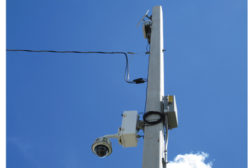Home » Keywords: » security licensing
Items Tagged with 'security licensing'
ARTICLES
Arizona Bill Drops Communications Tax; Gives Licensing Board More Leeway
Arizona House Bill 2546 has two main parts that affect alarm companies conducting business in the state
June 9, 2014
More Options for Wireless Video
Integrators have more options for wireless video surveillance than ever before. However, there are choices to be made, including licensed and unlicensed solutions, transmission distance, number of cameras supported, and more.
August 10, 2012
Get our new eMagazine delivered to your inbox every month.
Stay in the know on the latest security marketplace trends.
SUBSCRIBE TODAY!Copyright ©2024. All Rights Reserved BNP Media.
Design, CMS, Hosting & Web Development :: ePublishing


